There’s something irresistible about design pieces with history.
Maybe it’s the charm of wood that has already lived a lifetime (or several). Or maybe it’s the sparkle of a chandelier that lit dinner parties a century ago. Or perhaps it’s a family heirloom that tells a story near and dear to you.
Historical interior design elements can become sooo much more than simple décor. They’re stories! Sometimes the stories are the personal ones behind a family heirloom, and sometimes they’re the stories you imagine every time you look at an antique acquisition. The result’s the same, though: when you weave these elements into your home properly, you give your space soul.
Unfortunately, each historical element comes with design challenges. Sometimes, it’s about fitting a piece into a space with a totallydifferent look. Other challenges revolve around care and preservation. And MANY are about safety, because homes and furnishings from decades or centuries past weren’t built for today’s standards.
So…let’s do this article differently. Choose your preferred path below, starting with what you’re most drawn to. Then…see where that path takes you!
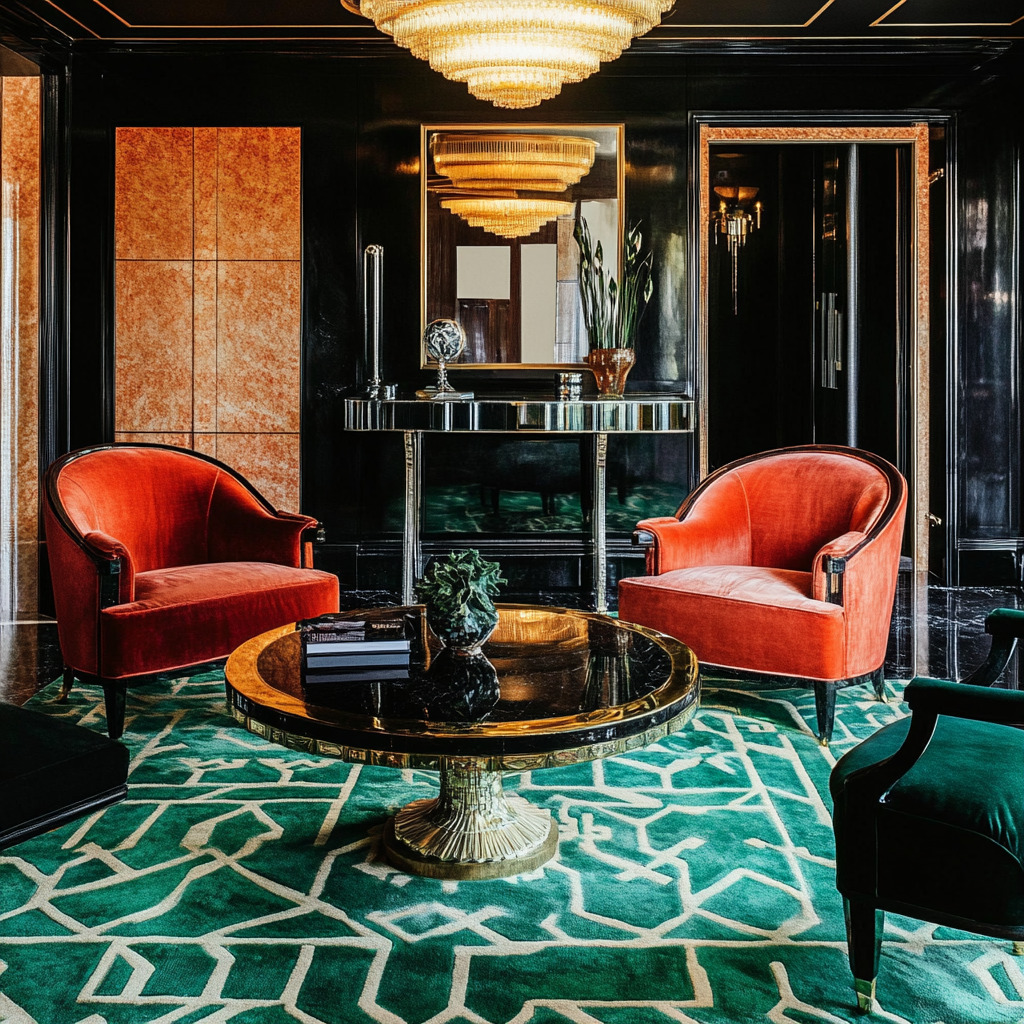
Path 1: If you’re eyeing a majestic style of ceiling beams or other antique woodwork…
Antique woodwork might show up as salvaged barn beams, carved mantels, or reclaimed trim. These elements bring warmth and character that you simply can’t recreate with something new. These selections are characterized by tool marks or other imperfections that whisper of a past life. (Talk about character!!)
Here’s what to know so you can decide if this can be worked into your home (or not):
- Design fit—Old beams and trim can be breathtaking, but scale matters. A salvaged barn beam in a low-ceilinged living room risks feeling heavy instead of warm.
- Maintenance—Antique wood is sensitive. Dry HVAC air can cause cracking, and pests love untreated timber. Plan for sealing, oiling, or other preservation measures.
- Safety—Never assume old wood is structurally sound!! Many beams are purely decorative once relocated. If you want it to carry weight, it needs reinforcement.
➡ Curious about vintage tile or stone instead? Jump to Path 3.
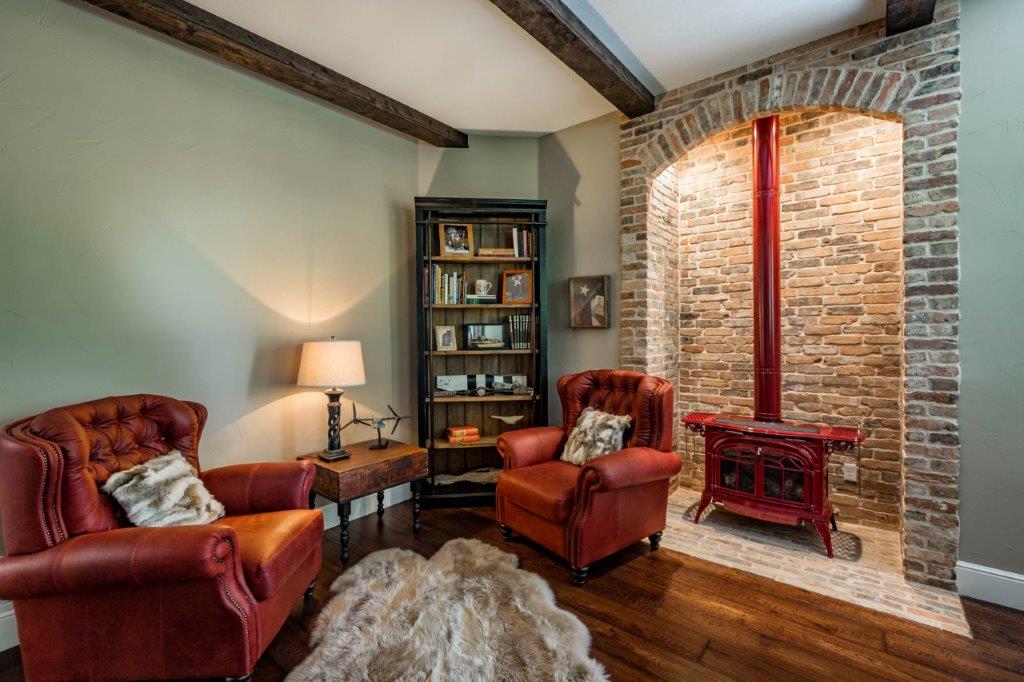
Path 2: If a vintage chandelier or sconce caught your eye…
A sparkling crystal chandelier from the 1920s…a brass Art Deco sconce…a mid-century modern pendant. Does one of those immediately intrigue you?! Antique lighting has a way of turning a room into an event. The best pieces were designed with incredible artistry…and deserve to shine again!!
Here’s what to know so you can decide if this can be worked into your home (or not):
- Design fit—Lighting is like a room’s crown jewel. Ask yourself if the selection you love will stand alone as a focal point or compete with other design features.
- Maintenance—Crystal, brass, and intricate detailing need gentle cleaning to retain their luster. Expect some upkeep if you want that sparkle.
- Safety—Nearly all antique lighting requires rewiring to today’s standards. Do not skip this step! What was safe in 1925 isn’t safe in your home today.
➡ Love the idea of stained glass? Your next step is Path 4.
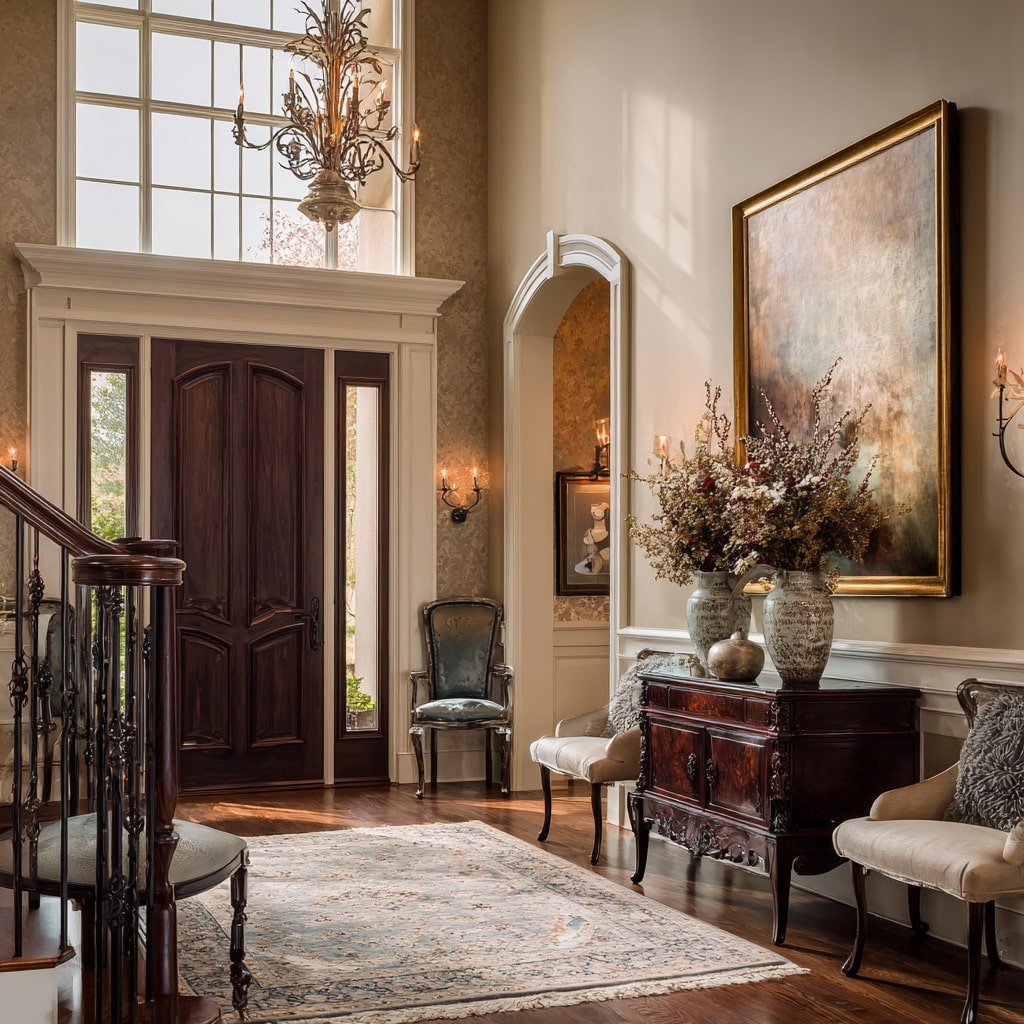
Path 3: If you LOVE antique tile or stone…
Vintage tiles, reclaimed marble, or patterned terracotta can create a breathtaking storybook charm. They’re often colorful and always hand-crafted, and even their irregularities make them more beautifully unique.
Here’s what to know so you can decide if this can be worked into your home (or not):
- Design fit—Vintage tiles can anchor a kitchen backsplash or entryway, but they carry bold personalities. Balance them with more neutral elements around them to keep the look from overpowering the space.
- Maintenance—Old stone and tile stain more easily and sometimes show wear quickly. Finding matching replacements is impossible, too…so be prepared to embrace the imperfections as part of the story.
- Safety—Uneven surfaces can create tripping hazards. This is especially important in bathrooms or kitchens where floors need to be safe under wet feet. Compare with the technology of today’s tile to be totally prepared for what you’re getting into…
➡ Did you find your fit?! Inquire with us to get started on incorporating these materials into your home…
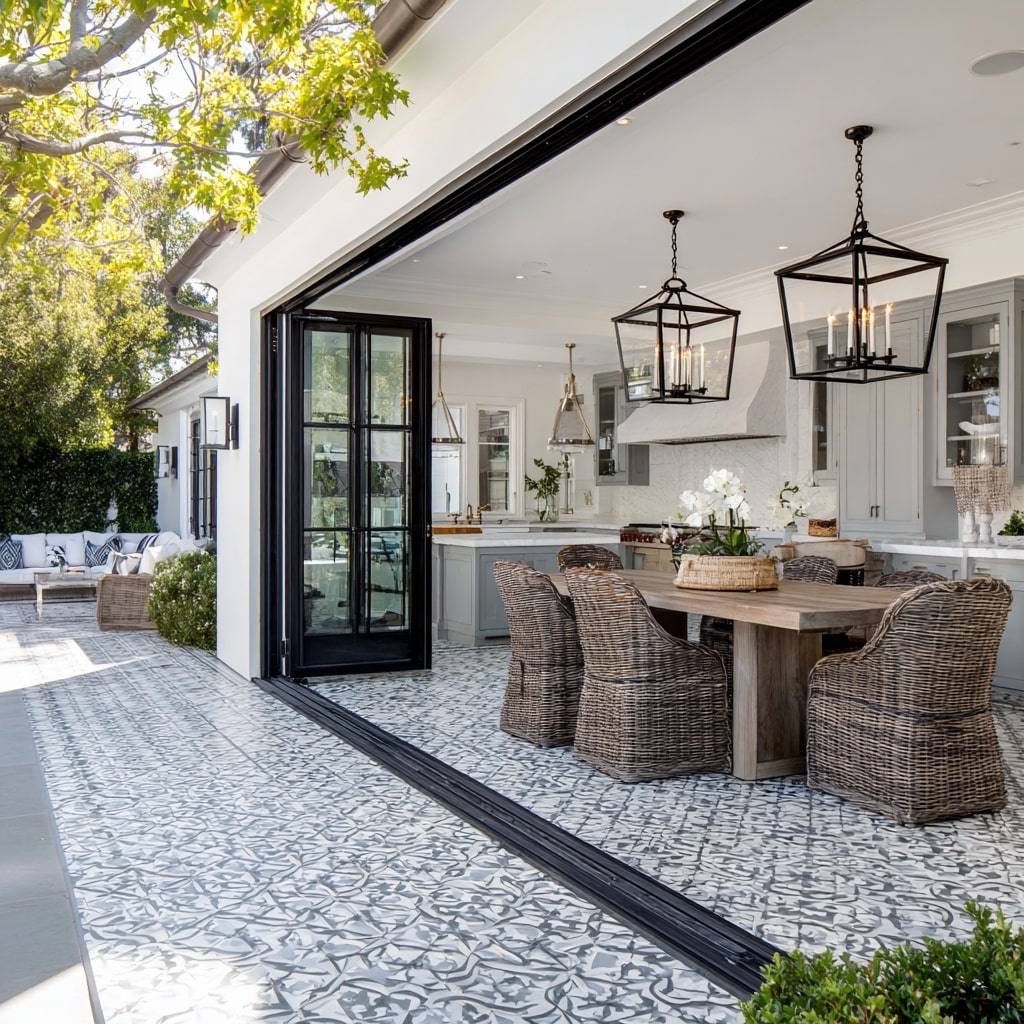
Path 4: If stained or leaded glass makes your heart sing…
Antique stained glass windows, cabinet inserts, or even leaded glass doors can bring an instant look of exquisite craftsmanship to your home. The colors, textures, and light play add as sense of visual drama that’s unmatched by anything mass-produced.
Here’s what to know so you can decide if this can be worked into your home (or not):
- Design fit—Placement is everything!! Stained glass glows in natural light, but privacy and orientation matter. Choose windows where the artistry can shine without sacrificing function.
- Maintenance—Over the decades, stained glass might bow or loosen. Professional restoration may eventually be part of your care plan, so be prepared.
- Safety—Antique glass is fragile, and some pieces might even contain lead. A protective glazing layer is needed to safeguard the piece and your household.
➡ Did you find your fit?! Inquire with us to get started on incorporating period glass into your home…
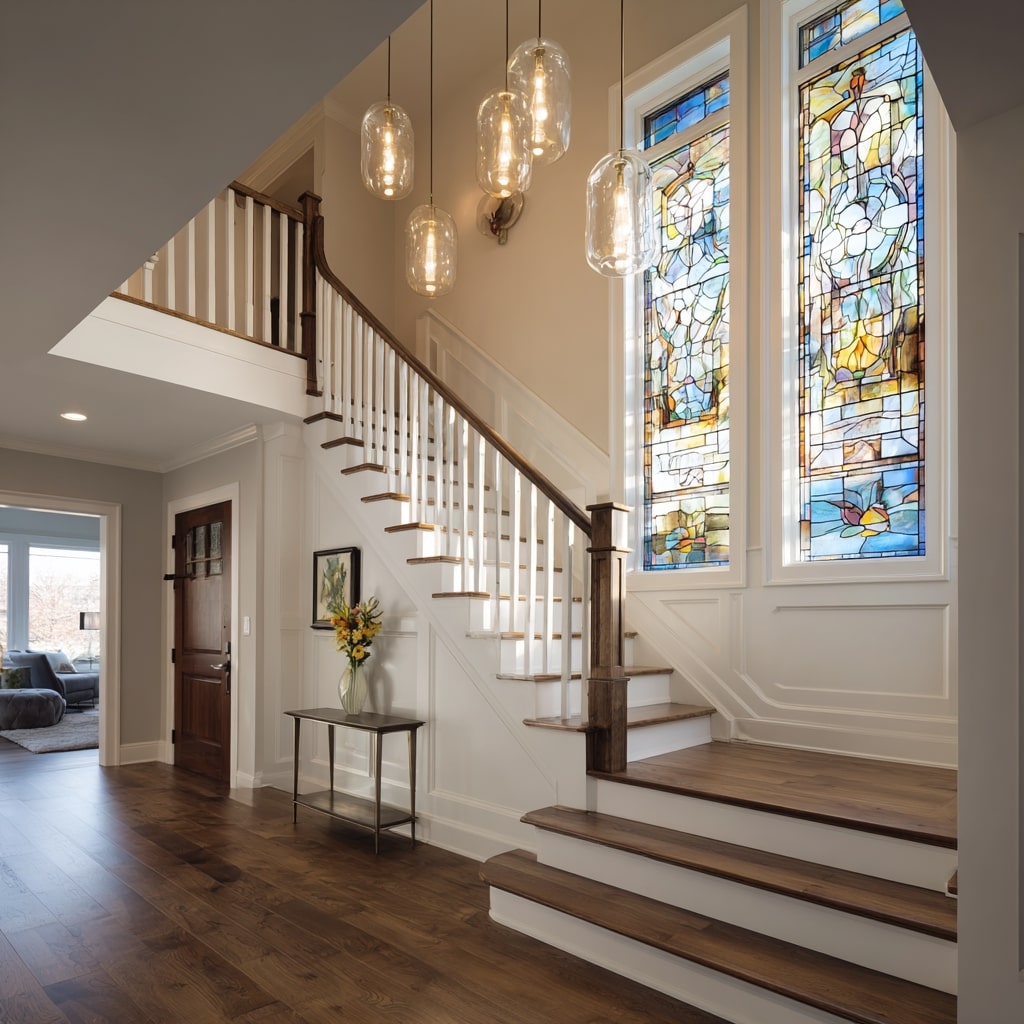
Path 5: If you’re considering vintage furniture…
From a Louis XVI–style side chair to a mid-century teak credenza, vintage furniture embodies some of our favorite design eras gone by. Right now, traditional style furniture—carved wood tables, curved sofas, and heirloom dressers—are enjoying a real comeback.
Here’s what to know so you can decide if this can be worked into your home (or not):
- Design fit—Traditional furniture is back in vogue, and vintage pieces can offer a much more exclusive feel of refinement. The trick is scale. Antique armoires or sideboards can feel oversized in today’s smaller rooms, while dainty chairs can be totally swallowed in open-concept layouts.
- Maintenance—Fabrics, finishes, and joints almost always need extra love and care. Reupholstery, refinishing, or even reinforcing are often be required to extend their life.
- Safety—Check stability and sturdiness, especially on seating or heavy case goods. Tipping, wobbling, or brittle legs can make a piece unsafe for daily use!
➡ Did you find your fit?! Inquire with us to get started on incorporating vintage furniture into your home…
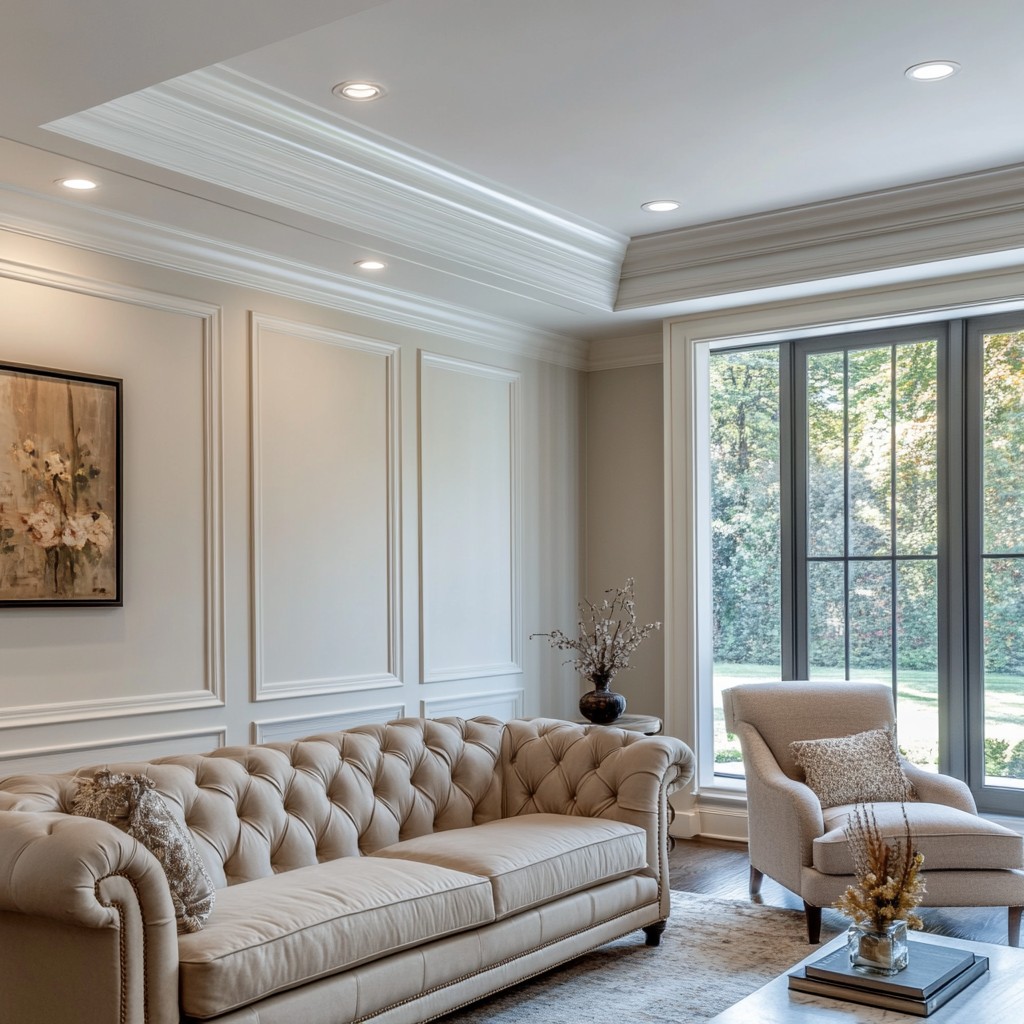
Path 6: If you treasure family heirlooms as décor…
Your grandmother’s quilt. Or a collection of porcelain figurines. Or a military trunk from your grandfather. Family heirlooms are among the most meaningful design elements you can bring into your home!! Personalization in interior design is SO important, and it doesn’t get any more personal than heirlooms.
Here’s what to know so you can decide if this can be worked into your home (or not):
- Design fit—A cherished quilt, porcelain set, or heirloom clock can become a room’s storytelling piece. But balance is key! Displaying too many heirlooms can tip a space from curated to cluttered.
- Maintenance—Some heirlooms are fragile, obviously! Rotate them over time, from one place to another, to avoid leaving one near an HVAC vent or in the sun too long. Use protective display cases if necessary.
- Safety—Delicate ceramics or sharp edges might not be ideal in homes with kids or pets. Display these items thoughtfully to keep the heirlooms and anyone running around safe.
➡ Did you find your fit?! Inquire with us to get started on incorporating family heirlooms into your home…

Whichever Path You Chose…
Bringing history into your home is rewarding. Each selection is a treasure that add depth and character that no showroom piece can replicate.
But historical selections also demand respect—respect for proportions, design harmony, the care they require, and safety.
If you’d like to weave an heirloom or antique element into your space, let’s talk through your options together!! Inquire with us now!
About the author:
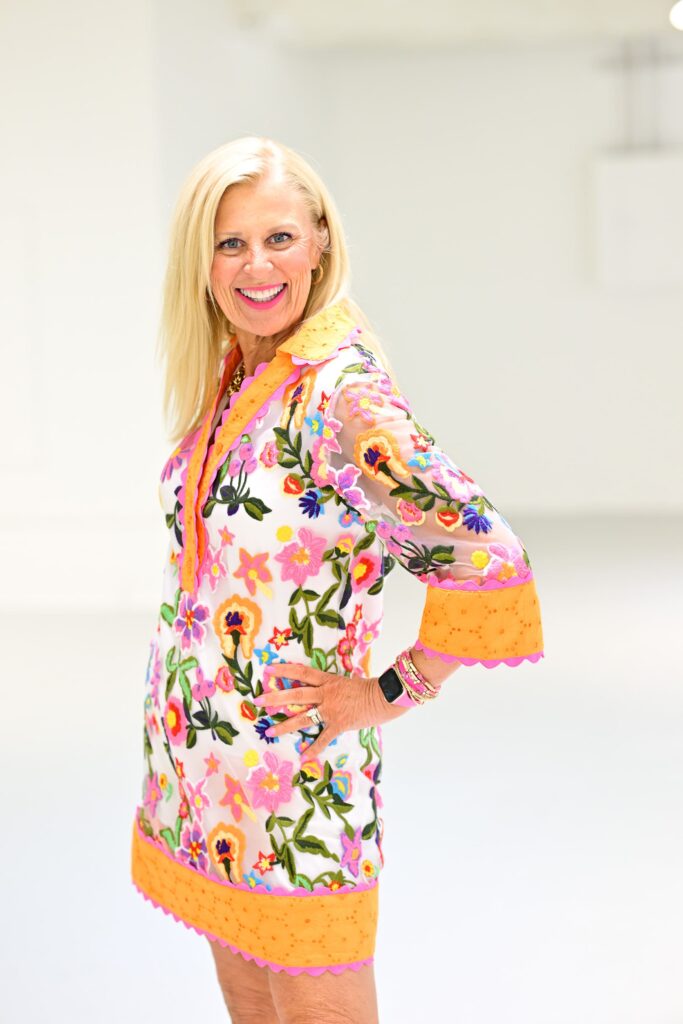
Robin Burrill, RID, NCIDQ, ASID, IDS, CAPS, is an award-winning professional kitchen, bath, and interior designer. Robin and her husband, Robert Mathews, have owned Signature Home Services, Inc. for over three decades, establishing a superior in-house team with a widespread reputation for delivering meticulous design to their many repeat clients.
In 2022, the national publication, Kitchen and Bath Design News magazine, named Robin to their Top Innovator list in recognition of her achievements in the field of kitchen and bath design. In 2024, she was named one of the Fall 2024 Market Pros and “tastemakers” by ANDMORE at High Point Market. Also in 2024, Fixr identified her as one of the Top Professional Interior Designers for their nationwide audience. At the start of 2025, she then acted as one of Dallas Market’s “Style Eyes” at Lightovation and Total Home & Gift Market.
Over her extensive career, Robin has been quoted in Architectural Digest and Forbes multiple times; her design work has been featured in top national trade publications; and she has been interviewed for Designers Today magazine’s “Profiles in Design” video series, among others. Widely respected for the depth of her knowledge, Robin is a sought after speaker and judge for many design industry events.
In 2023, Robin designed a bench for Charleston Forge, making her foray into product design. Robin currently serves as a volunteer on the board of the Dallas/Ft. Worth chapter of the Interior Design Society.

Leave a Reply